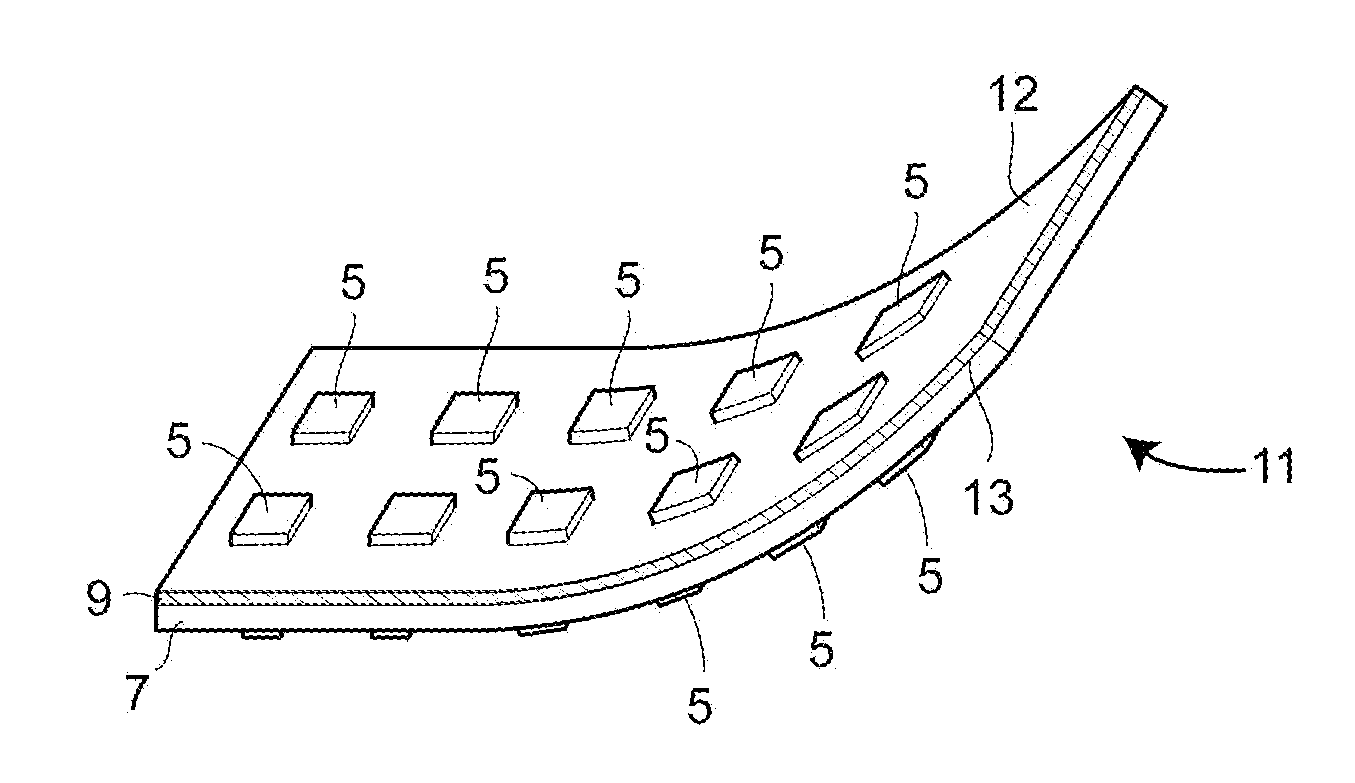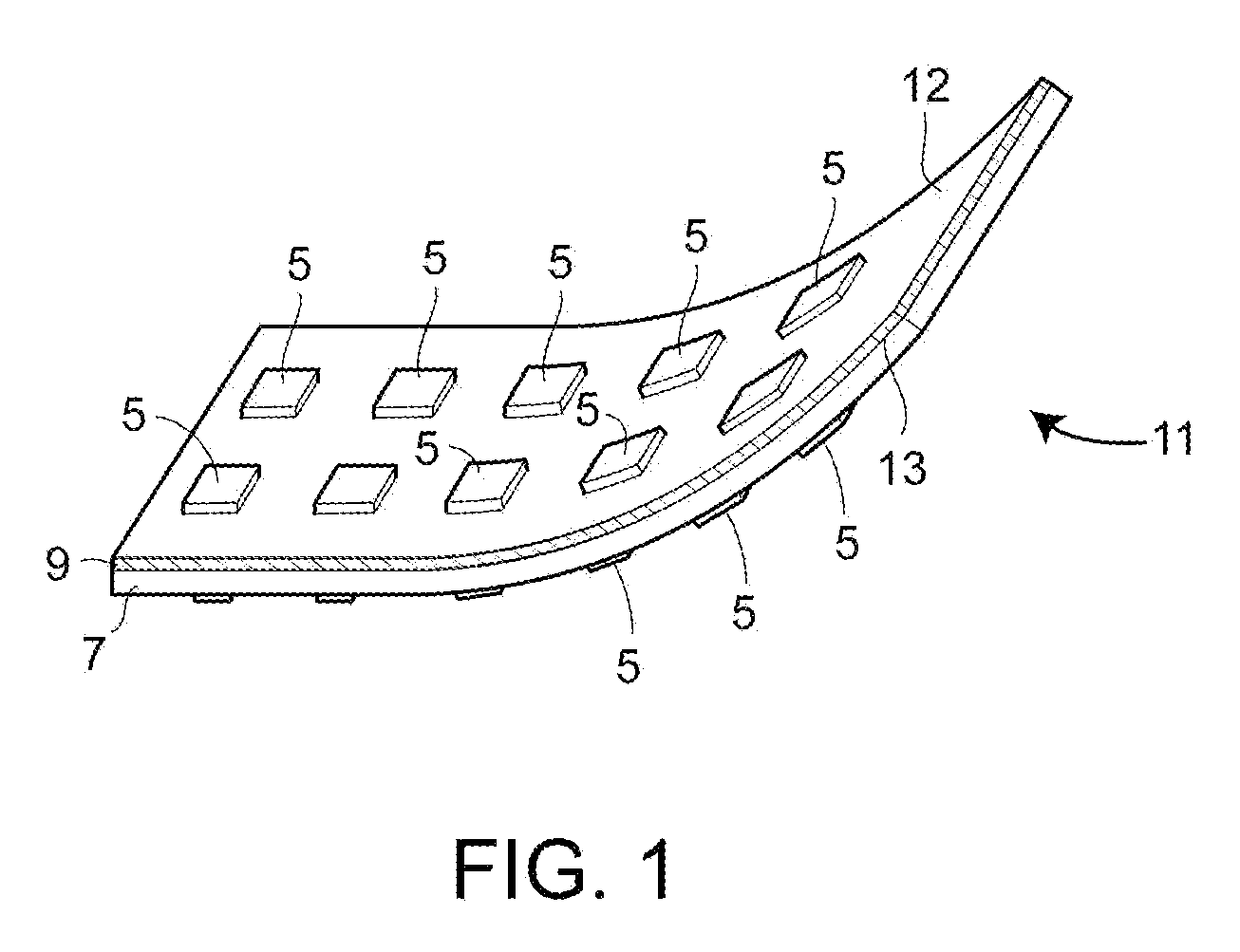Autologous lymph node transfer in combination with vegf-c or vegf-d growth factor therapy to treat secondary lymphedema and to improve reconstructive surgery
a lymph node and autologous technology, applied in the field of autologous lymph nodes, can solve the problems of affecting the survival of skin flaps following surgical procedures, especially reconstructive surgical procedures, and the inability to curative treatment of lymphedema patients, so as to improve the healing of skin and/or underlying tissue or adjacent tissues, reduce swelling/edema, and reduce infection
- Summary
- Abstract
- Description
- Claims
- Application Information
AI Technical Summary
Benefits of technology
Problems solved by technology
Method used
Image
Examples
example 1
Expression of Virally Transduced Genes In Vitro and In Vivo
[0189]The following example describes the synthesis of recombinant viral vectors for expression of VEGF-C and VEGF-C156S and assays to demonstrate that cells transfected with the vector produce the desired proteins.
[0190]A. Generation and In Vitro Analysis of Recombinant Adenoviruses and AAVs
[0191]The adenovirus construct AdVEGF-C156S was cloned as described in Saaristo et al., J. Exp. Med., 196: 719-730 (2002). Briefly, the human VEGF-C156S cDNA of SEQ ID NO: 5 was cloned as a BamHI / NotI fragment into the corresponding sites of the pAdBglII vector. Replication-deficient E1-E3 deleted adenoviruses were produced in 293 cells and concentrated by ultracentrifugation (Puumalainen, A. M., et al., Hum. Gene Ther., 9:1769-1774 (1998)). Adenoviral preparations were analyzed to be free of helper viruses, lipopolysaccharide, and bacteriological contaminants (Laitinen, M., et al., Hum. Gene Ther., 9:1481-1486 (1998)). The adenoviruses ...
example 2
Skin Flap Model
[0199]The following example describes the use of VEGF-C156S and VEGF-C adenoviral vectors to improve healing and reduce post-surgical complications in a skin flap operation procedure.
[0200]A. Operative Technique
[0201]NMRI nu / nu mice (Harlan, Horst, Netherland) were anesthetized and an epigastric flap was made to the ventral skin. The epigastric flap was elevated after incising the distal, proximal, and lateral borders. The flap elevation was performed with small scissors and no hemostasis was required. The right inferior epigastric vessels were incised and only the left inferior epigastric vessel remained functional in the flap pedicle. Finally, the flap was sutured back to its native configuration by using interrupted 5-0 non-absorbable sutures.
[0202]B. Administration and Evaluation of Adenoviral Vectors
[0203]The adenoviruses encoding VEGF-C, VEGF-C156S or LacZ were described in Example 1. 1×109 pfu of adenoviral particles were injected intradermally into the ventral...
example 3
VEGF-C Gene Therapy Restores Lymphatic Flow Across Incision Wound
[0209]A. Administration and Evaluation of Adenoviral Vectors
[0210]This example, similar to Example 2, shows that vascular endothelial growth factor-C (VEGF-C) gene transfer can be used to reconstruct a lymphatic vessel network severed by incision of skin flaps. Adenoviral VEGF-C gene transfer was employed at the edges of the epigastric skin flaps in mice.
[0211]Adenoviruses encoding human VEGF-C, VEGF-C 1565 and LacZ were constructed and protein expression tested as described in Example 1. NMRI nu / nu mice were anesthetized with intraperitoneal injection of xylazine (10 mg / kg) and ketamine (50 mg / kg). For analgesia, mice received buprenorphine 0.1-0.5 mg / kg subcutaneously twice per day. The vascular pedicle of the epigastric flap employed the right inferior epigastric artery and vein. When the whole flap was elevated, adenoviral vectors encoding either VEGF-C, VEGF-C156S or LacZ control virus (5×108 pfu) were injected in...
PUM
| Property | Measurement | Unit |
|---|---|---|
| pressures | aaaaa | aaaaa |
| capillary refill time | aaaaa | aaaaa |
| temperature | aaaaa | aaaaa |
Abstract
Description
Claims
Application Information
 Login to View More
Login to View More - R&D
- Intellectual Property
- Life Sciences
- Materials
- Tech Scout
- Unparalleled Data Quality
- Higher Quality Content
- 60% Fewer Hallucinations
Browse by: Latest US Patents, China's latest patents, Technical Efficacy Thesaurus, Application Domain, Technology Topic, Popular Technical Reports.
© 2025 PatSnap. All rights reserved.Legal|Privacy policy|Modern Slavery Act Transparency Statement|Sitemap|About US| Contact US: help@patsnap.com


